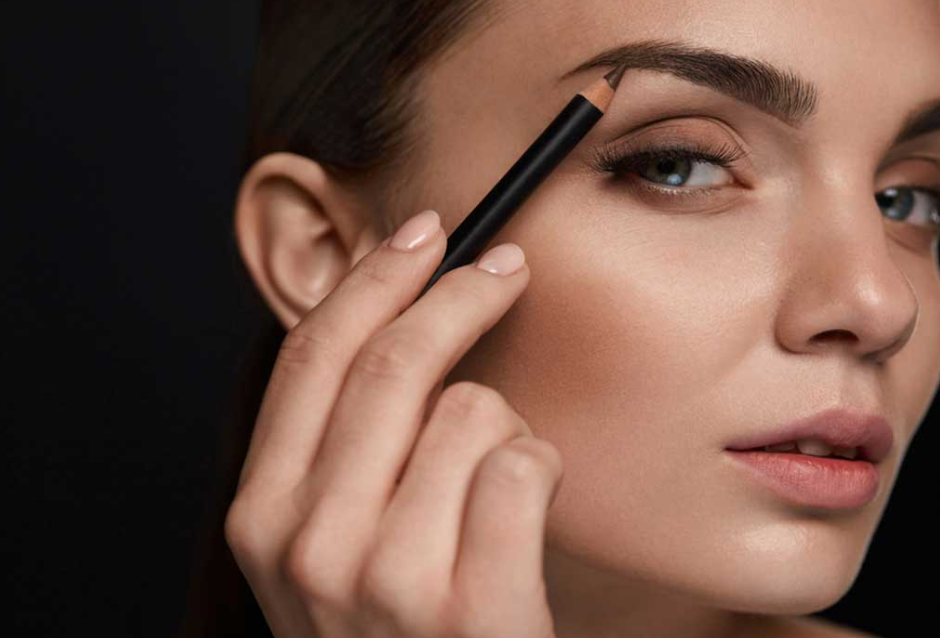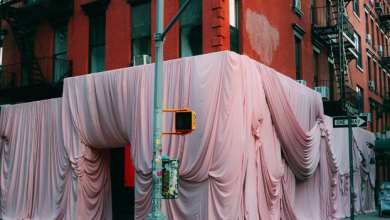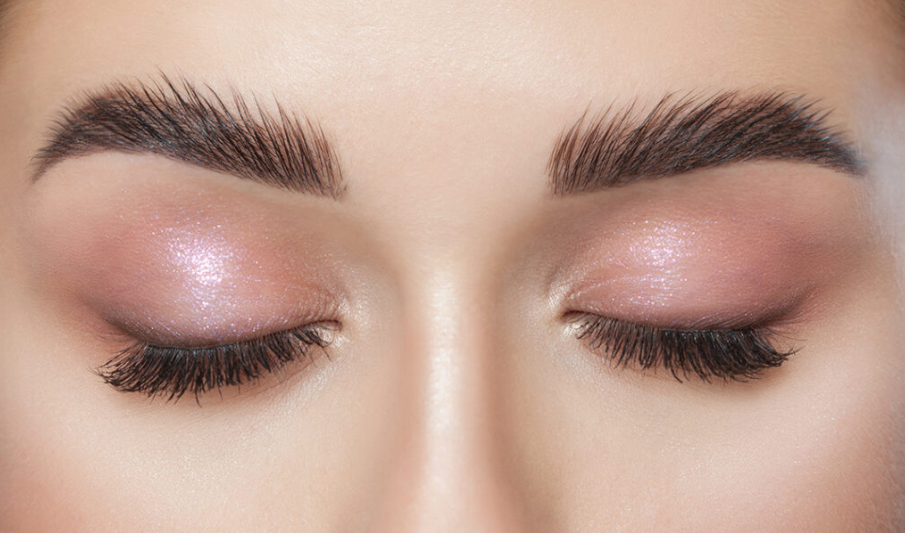The Transformative Energy of Perfume

I’ve learn that Guerlain’s L’Heure Bleue is commonly described as a melancholic perfume. Its creator, Jacques Guerlain, was impressed by the twilight in Paris—a sure blue hue he noticed throughout his walks by the Seine. Launched in 1912, this fragrance has turn out to be a timeless basic, nonetheless obtainable right this moment. Though the Paris of that period has pale, L’Heure Bleue, even in its trendy formulation, captures a reminiscence of that misplaced metropolis. Just like the artwork of that interval, or the writings of Jean Rhys within the Thirties, it’s magical when a creation can maintain a second from a distant time.
Director Andrei Tarkovsky spoke of an “picture” that might encapsulate “a complete world mirrored as in a drop of water.” He thought of a “chronicle” to be the top of cinema—a means of reconstructing, of recreating life. Whereas I’m no Tarkovsky, I deeply recognize a guide, portray, or perhaps a fragrance that preserves a fraction of life and time.
If you first encounter L’Heure Bleue, it’s reserved, virtually otherworldly. It doesn’t search rapid approval or recognition. Might it actually be untouched from the early twentieth century? Maybe. It doesn’t share the sweetness or the lightness discovered in lots of trendy fragrances. There’s a short animalic undertone, adopted by a wave of cleanliness, doubtless influenced by violet. Then, a notice or accord that means the ambiance of a grand French brasserie. I considered liqueur, almond, and vanilla. After which got here the photographs: nights, furs, carriages, darkish wooden, previous reflections, Kees van Dongen’s society portraits, the grand lodges of Paris like Le Meurice and Lodge Napoleon, narcoleptic lights, and darkish mirrors. This fragrance embodies the essence of an opulent metropolis and unique evening, making you are feeling spoiled, comforted, and heat. It evokes a grand bourgeois life, wrapped in wealth and night apparel.
Or, you may perceive what it’s wish to stay in Thirties Paris with no cash, as described in Jean Rhys’s Good Morning, Midnight, revealed in 1939. She writes about days of starvation, mornings tormented by illness, and the uncertainty of whether or not her husband, who will ultimately go away her, might borrow or scrounge some cash.
“I hadn’t bargained for this,” she writes. “I didn’t assume it might be like this—shabby garments, worn-out sneakers, circles underneath your eyes, your hair getting straight and lanky, the best way folks take a look at you… I didn’t assume it might be like this.”
Good Morning, Midnight acquired favorable critiques, although creator Rebecca West famous that should you weren’t considering suicide while you started the guide, you may think about it by the top. The guide, largely autobiographical, portrays a lady who loses her job in a trend home, lives in a shabby rented room, and wanders the town, usually choosing up males or visiting bars and cafés. She drinks closely, and her thoughts fragments, drifting into the previous. She writes like a painter, making a primary define in black and white—ordering Pernod in a bar, considering her chambre, visiting a boutique to purchase a hat—then layering feelings and reflections in colour and feeling. Her tones resemble these of Modigliani: nicotine yellow and crimson. Her voice is despairing however poetic, and the guide is unattainable to place down.
“I now not want to be cherished, stunning, glad, or profitable. I’ve had sufficient of these streets that sweat a chilly, yellow slime, of hostile folks, of crying myself to sleep each evening. I’ve had sufficient of pondering, sufficient of remembering. Now whiskey, rum, gin, sherry, vermouth, wine… drink, drink, drink… As quickly as I sober up, I begin once more. I’ve to power it down generally. You’d assume I’d get delirium tremens or one thing.”
Who was Jean Rhys? A author, although she by no means aspired to be one. She started writing when she was damaged, when her life was in ruins. Born right into a fading colonial household in Dominica, she attended drama college in London and was captivated by Soho’s bohemian nightlife. She had affairs with older, rich males—one paid for her first abortion and coated her lease. L’Heure Bleue was her favourite fragrance. One in all her biographers suggests she preferred it as a result of it was a tragic fragrance, however I consider she cherished it for its scent of safety and wealth—the fragrance of what she lacked. Poverty was a continuing in Rhys’s life and is mirrored in her work. In Good Morning, Midnight, she lies in a shower, watching cockroaches on the partitions. She is aware of how imply the homes look while you’re strolling the streets at evening, half-drunk and getting ready to homelessness. Structure loses its attraction.
“Frowning and leering and sneering,” she observes of Paris, “the homes, one after one other. Tall cubes of darkness, with two lighted eyes on the prime to sneer. And so they know who to frown at.”
Anybody who has skilled poverty understands the egocentric gaze of different folks’s properties. I’ve seen these “cubes of darkness” in George Grosz’s work of the Thirties, which depict demented cities and hostile bricks. Rhys knew the sensation of alienation when you don’t have anything, or just how alienated one can really feel. Once more, from Good Morning, Midnight:
“… you’ve by no means lived like that, plunged in a dream, when all of the faces are masks and solely the bushes are alive and you may virtually see the strings which might be pulling the puppets. Shut-up of human nature – isn’t it value one thing?”
One in all my favourite strains, though it’s heartless to like a wretched line, is: “And my costume,” she writes, “extinguishes me.”
Guerlain didn’t create a fragrance to evoke psychological anguish. L’Heure Bleue is a fragile dream of refinement. In direction of its coronary heart, the perimeters soften, presumably from the final of the violet or the primary trace of closing vanilla. There are notes that recommend the evening is clearing. Rising from the depths is a rose, or a rose blended from carnation, ylang-ylang, tuberose, and Bulgarian rose. Guerlain as soon as talked about being influenced by the Impressionists. Rhys, whereas a bit later in years, resonates extra with the Surrealists—Grosz, Breton, Dalí—and a darker, extra psychotic Europe. Are there flowers in Good Morning, Midnight? Sure, however they’re nightmares made flesh.
“There’s a wind, and the flowers on the windowsill, and their shadows on the curtains, are waving. Like swans dipping their beaks in water… Like skulls on lengthy, skinny necks. Plunging wildly when the wind blows to the top of the curtain, which is their nothingness.”
Whereas Rhys’s internal turmoil captivates me, I additionally adore Good Morning, Midnight for its vivid portrayal of Thirties Paris: the mannerisms of a waiter, a woman’s tight skirt, snippets of dialog, a Russian painter who dances in his studio carrying an African masks. And bohemian pals like Paulette, who steals inventory from her aristocrat lover to offer to her impoverished pals. Paulette is gorgeous, with lengthy blonde hair. She retains a bowl of violets in her room…
“When she appears at herself within the glass, bare, she’s as proud as Lucifer.”
There are sensual notes in L’Heure Bleue, however they’re fleeting. You catch a glimpse—a feral physique transferring by shadows. Rhys, as anticipated, takes a distinct method. An older man will get her drunk and locations his hand on her knee. Alone in her room, after a gigolo tries to power her legs aside…
“When he has gone I flip over on my aspect and huddle up, making myself as small as attainable, my knees virtually touching my chin. I cry in the best way that hurts proper down, that hurts your coronary heart and your abdomen.”
You gained’t discover that in a fragrance. It would exist, however I haven’t encountered it. L’Heure Bleue concludes in a floating backyard or a clear bed room at daybreak. The perfume ends with sparkles, sleepy powder, and a flower that glows softly like metropolis lights (or site visitors lights) within the mist, like a dream picture. And since time in fragrance isn’t linear, a number of sides, parts of its earlier notes and phases, flash within the depths. L’Heure Bleue is as elusive as Good Morning, Midnight is profound. Rhys revels in her season in hell and feeds on its secrets and techniques—even public restrooms.
“That cozy little Paris lavabo, the place the attendant peddled medicine – one thing to heal a wounded coronary heart.”
Guerlain and Rhys make an intriguing pair: the Impressionist and the Surrealist. Each are impressed by Paris and each encapsulate their metropolis in a labyrinth of sentences, photos, and mists. They work collectively, Jean and Jacques, who by no means met. She wore his fragrance, and maybe he knew her gigolos and émigrés, her rooms and flesh, his gentle. Her hallucinations drift like his scent—misty photos floating in time. The author Ian Penman mirrored on Rhys when he uncovered a clue in one in all her letters. It was a information to her methodology, nevertheless it additionally describes this fragrance.
“The large thought – effectively, I’m blowed if I may be positive what it’s. One thing to do with time being an phantasm, I feel. I imply that the previous exists – aspect by aspect with the current, not behind it; that what was – is.”
Certainly. In goals and nightmares, they linger on,




